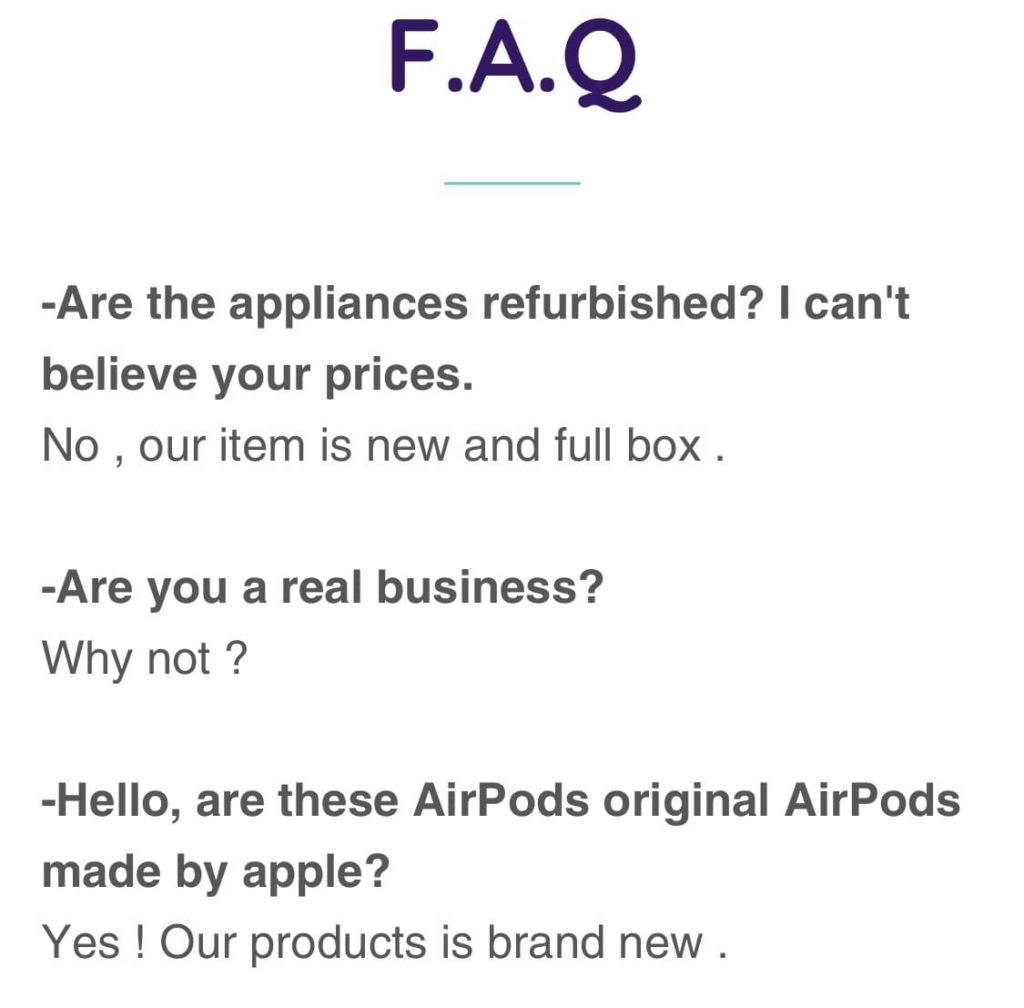January 23, 2019
How to Be Trustworthy
Note: this is the third in a series about how to stand out and be a light in a saturated digital space. Read the introduction to the series here.
There’s a common fallacy among non-marketing folks that marketing = advertising.
Any marketing theory textbook will tell you in no uncertain terms that advertising is only one form of promotion, and that promotion is only one element of marketing.
In marketing, we often refer to the 4 P’s: product, price, place, and promotion.
However, there’s one more element that most marketers forget: proof.
Proof is exactly what it sounds like. It’s evidence that your messaging matches – or doesn’t match – with what you are providing your customers.
And proof is the basis for trust.
Why Trust Matters
If brand is a company’s most valuable asset, trust is the most valuable part of a brand.
Consumers can overcome most elements of a brand, provided the brand stands out in another way. They may buy something that’s too expensive if they can justify it with quality. Or, they may buy something they know is low-quality if the price point is worth it.
They may be ok sacrificing speed if they know they’ll get a personal touch. They may even overlook poor customer service if they know they’ll like the product.
But nobody will ever buy anything from a brand they don’t trust.
(The one exception to this rule is a monopoly. If you’ve got a monopoly, I doubt you’re reading this article. You stand in a significantly less saturated space.)
For the rest of us, trust is ultra-critical. Trust, if achieved and if maintained, can overcome faults in product, place, price, or promotion.
Of course, the more faults there are in those four P’s, the more trust is needed to overcome them. And those faults can all contribute to breaking down trust.
There’s no magical formula to build trust, because what people value is different to everyone. But if we put on our psychology and sociology hats, we’ll recognize that there are some traits that are common enough to say with a high degree of certainty that all people value them. And that’s a common ground on which to begin building trust.
Adding on our marketing hat, we can dig a step deeper and find things that all of our target audience find important (see the previous article in this series). If we can hone in on proof in those areas, we’ll begin building trust.
It’s not easy to build trust (and it’s very easy to lose it). Most people can recognize a brand message coming a mile away, and put their guards up quickly.
But the greener pastures that make trust so important are brand acceptance, loyalty, and advocacy.
By focusing on proof that matters to people in general and our audience specifically, organizations can take steps toward the element of a brand that can make or break a purchasing decision.
How to Be Trustworthy
Appearances do matter. They’re an easily-accessible heuristic that helps us judge whether or not a person or brand is trustworthy.
Invest in your visual identity and your website. If your website is outdated, has broken links, isn’t mobile-friendly, isn’t secure, or any number of other problems, your customer won’t trust you.
If you have typos in your social posts, you won’t seem professional and you won’t seem legitimate.
I was reminded of this fact recently when my wife came across a website selling an expensive product she wanted at a surprisingly good price. Truly, too good to be true. When we dug a little deeper, sure enough:

This may be a dramatic example, but it illustrates the point.
There are other cues that say something to your customer. Can you imagine if instead of hello@phoscreative.com, our public-facing email address was phos@hotmail.com? Nobody would do business with us.
Certifications and Associations

You know which certifications and associations are applicable to your industry. They’re often badges or signs of approval that your clients will actively look for. If I’m going to use a personal trainer, it’s going to be someone that’s earned one of a handful of personal training certifications I recognize. That’s something I trust.
We’re listed on a Google site that indexes all Google Partner agencies, and clients could find us through that route. They never do, because it’s not the first place they’re going to look. But when they see it on our site, it conveys that yeah, we know what we’re doing.
If you’re a member of the National Association of your industry, make sure that’s visible in your marketing. It’s almost certainly not your primary marketing message, but it’s an important supporting one.
Awards fit into this category as well. Our Google Partner badge sits right next to the awards we’ve won in our footer (just saying). Awards may not be your goal (they likely shouldn’t be), but they’re recognition for excellent work done at a high level. Potential customers and clients will recognize that.
Reviews

Reviews are one of the most powerful ways to demonstrate trustworthiness. When potential candidates and potential team members meet with us, we ask how they found us. The methods vary, but 9 times out of 10, they’ll mention how impressed they were by our reviews on Google.
Reviews vary by industry. Restaurants and local attractions have Yelp. Software brands have review sites like G2 Crowd and Capterra. With the never-ending list of nonprofits out there, sites like Charity Navigator and GuideStar seek to sort out the most worthy, on a number of criteria (those also fit in the certifications category). And just about every business has Google and Facebook reviews.
No matter your industry, the first step is to create a review-worthy experience. Whatever that means for you, people generally only leave reviews for two things: remarkably bad experiences, and remarkably good experiences.
I love the word “remarkable” – literally, something that merits remarks. Take a look at every touchpoint in your business, from your website quote form to your sales process, to your customer service, to your product or service itself.
Create something so remarkably good that people want to put their name behind it in a review.
After that (or rather when you feel you’ve created a good experience because that process is never-ending), start asking for reviews. Really, just ask. People are much more likely to leave a review for a good experience if you simply ask.
Be smart about this by asking at the right time. Don’t wait months after a purchase or after you complete your service. If you’ve created a great experience, ask them while it’s fresh in their mind. Build it into your process, or, if you’re doing business online, automate it.
And then, of course, feature those reviews. Put them on your website. If your site has different pages for different services, feature service-specific reviews on the appropriate pages, and more general ones about how much people love you on more general pages.
Connect with people who leave glowing reviews, and ask if you can turn them into video testimonials. Feature those on your site and on social media. For a B2B brand, you may be able to turn some into full-fledged case studies, written by your team and punctuated with their words. Add those quotes to future proposals.
The point is, once you’ve created a remarkable experience, created an easy path to a review with a personal touch, and captured their feelings in a glowing review, use it to your advantage. People trust the recommendations of others exponentially more than any other marketing effort.
Social Proof

Similarly, picture two restaurants that you drive by every day heading home from work. One has a well-lit property, new signage, and a near-empty parking lot every day. The other is off the beaten path and doesn’t look as nice, but the parking lot is packed every time you see it.
That’s the concept of social proof. As we said before, looking the part is important, but it doesn’t tell the whole story. You’re likely to look beyond the surface-level mental cues in appearance. You may even forgive a longer wait for your food. You’ll likely still look up reviews online beforehand, but they probably will tell the same story you’re seeing driving by – restaurant number two’s got something good cooking.
You can see the same thing online, and it goes beyond just the food industry. If after seeing your website they’re not totally convinced, customers and clients will check your social media accounts just to see what you’re all about. When they do, will they see 500 likes or 5,000? Or 50,000?
Invest in getting a baseline number of followers on your social accounts. Spend the money on Facebook ads for followers, because it really is an investment.
Some will say how many likes you have is a vanity metric, and to an extent they’re right. At a certain point, there are more important things to invest in. But customers will check your Facebook, they will check your Instagram. And the number at the top of the page will tell them a story about what kind of brand you are.
We’re more willing to give our money to a business when we feel we can trust that business.
Whether or not it’s a conscious deliberation of whether a brand is trustworthy (usually it’s not), your potential consumer is going to make an assessment of your trustworthiness as a brand.
That assessment is a powerful indicator of whether or not you’ll earn that customer or client’s business. That’s worth taking a look at ways to appear trustworthy to your wide base of potential customers.
Sign Up for the Be a Light Series
This brand strategy series is all about how to stand out and be a light in a saturated digital space. To receive the four-part series straight to your inbox, enter your email address below.







